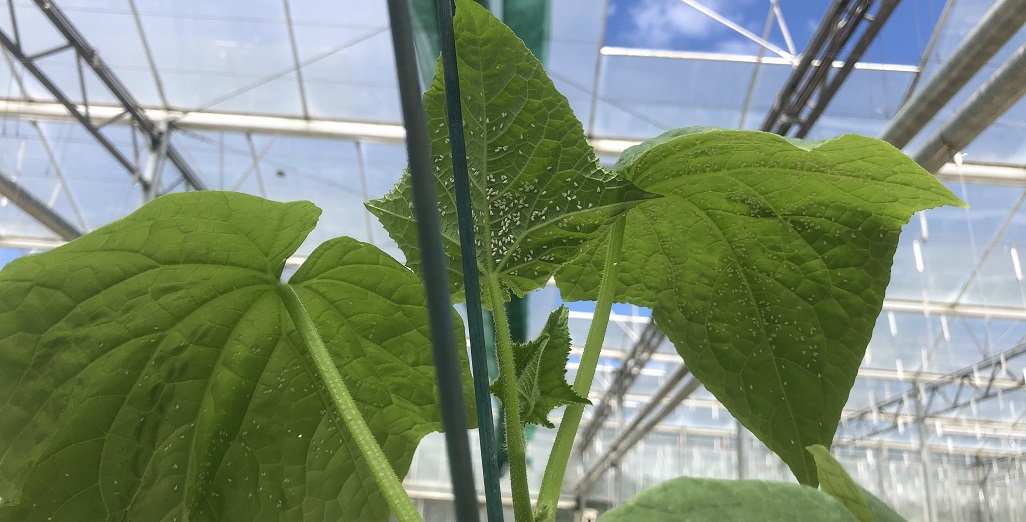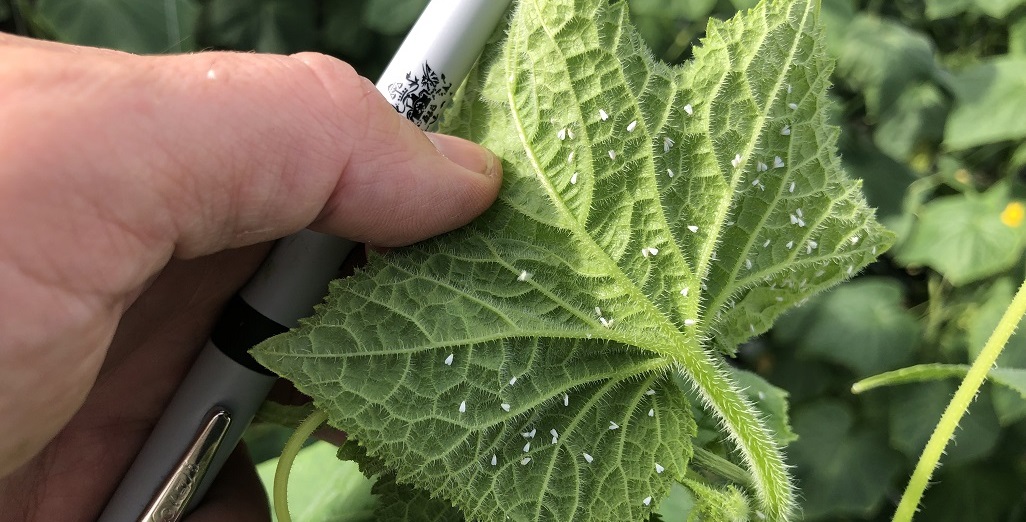Sign up here to subscribe to the Grower2grower Ezine. Every two weeks you will receive new articles, specific to the protected cropping industry, informing you of industry news and events straight to your inbox.
Sep 2018
Caution is recommended when Combining and Spraying Different Products

As insect numbers will start to increase
Spraying with plant-based oils or botanical oil concentrate is currently commonplace, especially with the amount of insecticides growers have (or do not have) access too. Using botanical oil concentrate, as an integrated attack method to control insects is a great way to reduce the use of insecticides, thereby also reducing the risk of insects becoming resistant to certain chemistry. Another very good reason to be using organic products is they have very short withholding periods, if any. I have always liked using different (effective) oils to control insects such as whitefly and other insect pests. Now that spring is here and we are growing into warmer weather, pressure from pests will start to increase. I believe that many growers will be spraying botanical oils, either on its own or mixed with insecticides to reduce insect numbers.
During the past week I have seen a crop of tomatoes with damage to the leaf area but luckily no damage to the fruit. This is however, a warning that caution needs to be taken in respect of your spraying rates and mixing of more than one product. In this particular instance, the rate for the oil was only slightly over the recommended product guide lines and it was mixed with an insecticide. I recommend extreme caution if you combine any products and that you make sure that you have the correct advice from the point of purchase of your products, especially if you wish to combine them. I would also check with the manufacturer's guidelines and recommendations in respect of what the product should or should not be combined with. This information is usually accompanied with most products but if you are still unsure then it should be possible for you to contact the manufactures via their websites.
You can visably see the damage of the leaf from the spraying.
If you are still in doubt, mix up a small amount of solution and spray a test area with a knap sack. Check over the next few days to see if it has caused a bad reaction to the plant. I would wait at least two days before I would be satisfied there was no damage before I considered spraying the entire greenhouse.
Other considerations:
- The PH of the combined solution? Get the recommendation from point of sale. This is very important.
- What time of the day are you spraying. In the Spring I liked to spray between 8.30-11.30 am. This is achievable for smaller properties but challenging for larger areas.
- What are your weather conditions: Ideally I would want to spray on bright sunny days so the spray could dry as fast as possible to reduce the risk of damage (more so when spraying botanical oil based products). If the weather is not appropriate for spraying but you are concerned because of withholding periods, err on the side of caution, its just not worth damaging your plants. You could end up causing more issues.
What are you specifically targeting?
If you are spraying with an oil and insecticide combined, and were targeting, for example adult whitefly, then only spray the top third of your plant. If spraying for the other life cycles of whitefly using insecticides then I would spray and cover the entire leaf canopy but I would probably not combine them with a botanical oil. It can depend on the time of the year and again weather conditions.
Conclusion:
It’s not easy, and there is no easy answer, just experience! Making sure you ask lots of questions and get the correct advice which is imperative.
I appreciate your comments. If you have any other advice you would like to add to this article, please feel free to comment below or on the grower2grower Facebook page:
https://www.facebook.com/StefanGrower2grower/
Article Written by Stefan Vogrincic, Consultant, Grower2Grower
CLASSIFIED
Subscribe to our E-Zine
More
From This Category

Starting on the back foot

(Best of 2023) RNA-based disease control in protected cropping environments. Anne Sawyer presents at the PCA Conference (Best new development PCA 2023)

(Best of 2023) Aphid infestation on cucumber crops

LimoMax, a new predator for insect control in greenhouses and outdoor crops.

Aphid infestation on cucumber crops






























